Subscribe to our ▶️ YouTube channel 🔴 for the latest videos, updates, and tips.
Division Sharing and Grouping
We will learn division sharing and grouping.
Share eight strawberries between four children.
Let us distribute strawberries equally to all the four children one by one.
After distributing equally among four children, four strawberries were left. They can be further distributed among four children.
Now, there are no more strawberries left in the box. Each child got 2 strawberries. So, division is an operation of repeated subtracted of the same number.
8 – 4 = 4
4 – 4 = 0
Here, we have subtracted 4 repeatedly 2 times until we reached 0.
Hence, 8 strawberries ÷ 4 children = 2 strawberries for each child.
We can also say that 8 strawberries have been divided into 4 equal groups of 2.
So, 8 ÷ 4 = 2. This is called a division fact.
Division means sharing equally or making equal groups.
Equal Grouping
Examples:
1. Nitheeya has 27 flowers. She wants to make garlands of 9 flowers each. How many garlands can she make?
Solution:
She first puts 9 flowers in 1 garland.
She makes another garland of 9 flowers.
She makes 1 more garland of 9 flowers.
|
27 |
÷ |
9 |
= |
3 |
|
Total number of flowers |
number of flowers in each garland |
number of garlands |
Thus, Ntheeya can make 3 garlands of 9 flowers each.
Questions and Answers on Division Sharing and Grouping:
I. Divide the following:
(i) Put flowers in vases equally and write the division sentence.
(ii) Put fishes equally in the tanks and write the division sentence.
Answer:
I. (i) 4 ÷ 4 = 1
(ii) 9 ÷ 3 = 3
II. Make groups of 2 and complete the division fact.
………… bananas have been divided into ………… groups.
………… ÷ ………… = …………
………… flowers have been divided into ………… groups.
………… ÷ ………… = …………
………… balloons have been divided into ………… groups.
………… ÷ ………… = …………
Answer
II. (i) 8 bananas have been divided into 2 groups.
8 ÷ 2 = 4
(ii) 12 flowers have been divided into 2 groups.
12 ÷ 2 = 6
(iii) 6 balloons have been divided into 2 groups.
6 ÷ 2 = 3
III. Divide and complete the division fact.
(i) Distribute 12 candies equally among 4 kids.
Each kid has ……….. candies.
So, 12 ÷ 4 = …………
(ii) Distribute 18 oranges equally among 3 boxes.
Each box has ……….. oranges.
So, 18÷3 = …………
(iii) Distribute 20 pencils in 4 pencil stands.
Each pencil stand has ……….. pencils.
So, 20÷ 4 = …………
Answer:
III. (i) 3
(ii) 6
(iii) 5
IV. Divide by repeated subtraction:
(i) 40 ÷ 5
(ii) 64 ÷ 8
(iii) 42 ÷ 7
(iv) 54 ÷ 9
Answer:
IV. (i) 8
(ii) 8
(iii) 6
(iv) 6
V. Look at the picture and fill in the blanks.
(i) 3 girls share 15 dolls equally.
(ii) 12 boys are put into 2 equal teams.
(iii) 24 fishes are put equally into 3 fish tanks.
(iv) 12 flowers are put equally into 3 bases.
Answer:
II. (i) 5, 15 ÷ 3 = 5
(ii) 6, 12 ÷ 2 = 6
(iii) 8, 24 ÷ 3 = 8
(iv) 4, 12 ÷ 3 = 4
III. Divide 12 bananas into 3 equal groups. Circle the groups.
|
How many bananas are in each group? ……………. How many bananas left? ……………. How many groups are there? ……………. |
Answer:
III. 4, 0, 3
IV. Divide 8 pineapples into 2 equal groups. Circle the groups.
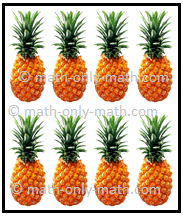 |
How many pineapples are in each group? ……………. How many pineapples left? ……………. How many groups are there? ……………. |
Answer:
IV. 4, 0, 2
V. Divide 9 pearls into 3 equal groups. Circle the groups.
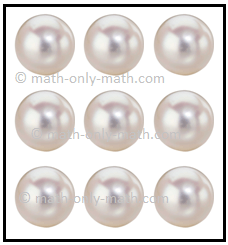 |
How many pearls are in each group? ………… How many pearls left? ………… How many groups are there? ………… |
Answer:
V. 3, 0, 3
VI. Divide 16 apples into 4 equal groups. Circle the groups.
Answer:
VII. 4, 0, 4
VII. Compare the two groups in each set. Tick the equal groups and cross the ones that are not equal.
Answer:
(i) ✗, ✓
(ii) ✗, ✗
(iii) ✗, ✓
VIII. Make groups of 3 objects and complete the division sentence.
Answer:
VIII.
(i) 9 candies have been divided into 3 groups
9 ÷ 3 = 3
(ii) 12 crayons have been divided into 3 groups
12 ÷ 3 = 4
(iii) 6 cupcakes have been divided into 3 groups
6 ÷ 3 = 2
IX. Make groups of 4 objects and complete the division sentence.
Answer:
IX. (i) 12 flowers divided into 3 groups.
(ii) 20 pencils divided into 5 groups.
(iii) 16 apples divided into 4 groups.
X. Draw and divide 25 fishes in 5 fish tanks.
Answer:
X. 25 ÷ 5 = 5
XI. Draw and divide 15 pencils in 3 pencil holders.
Answer:
XI. 15 ÷ 3 = 5
XII. Draw and divide 12 apples in 4 plates.
Answer:
XII. 12 ÷ 4 = 3
XIII. Draw and divide 30 flowers in 5 flower pots.
Answer:
XIII. 30 ÷ 5 = 6
From Division Sharing and Grouping to HOME PAGE
Didn't find what you were looking for? Or want to know more information about Math Only Math. Use this Google Search to find what you need.
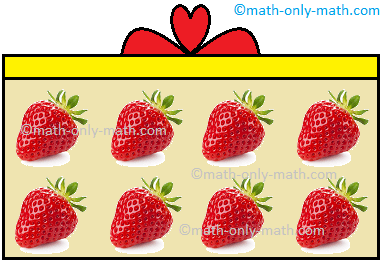
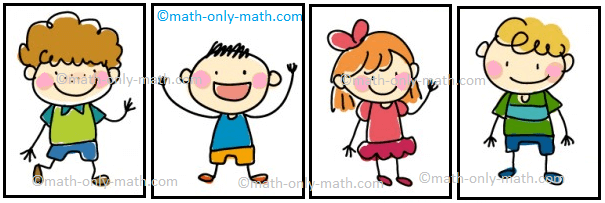



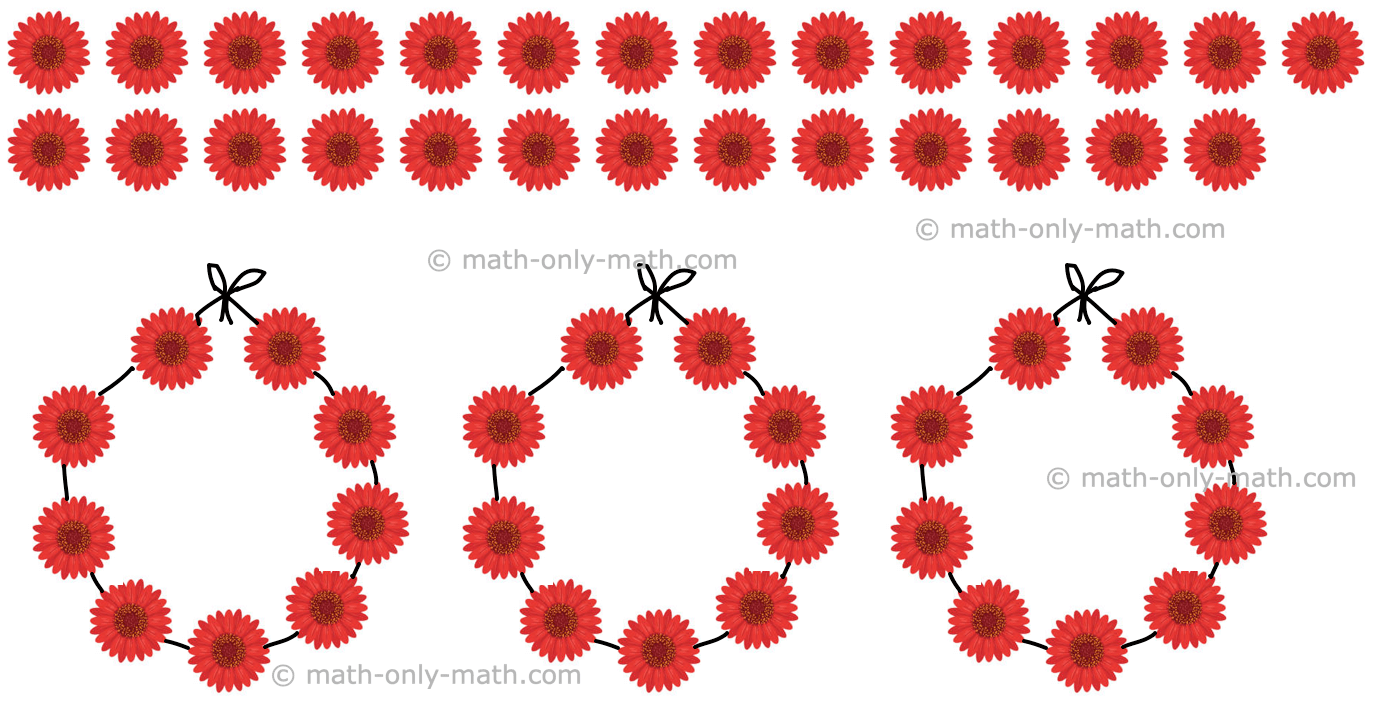



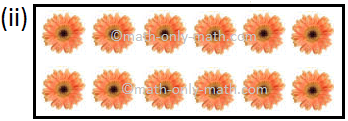
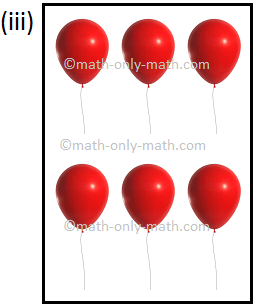

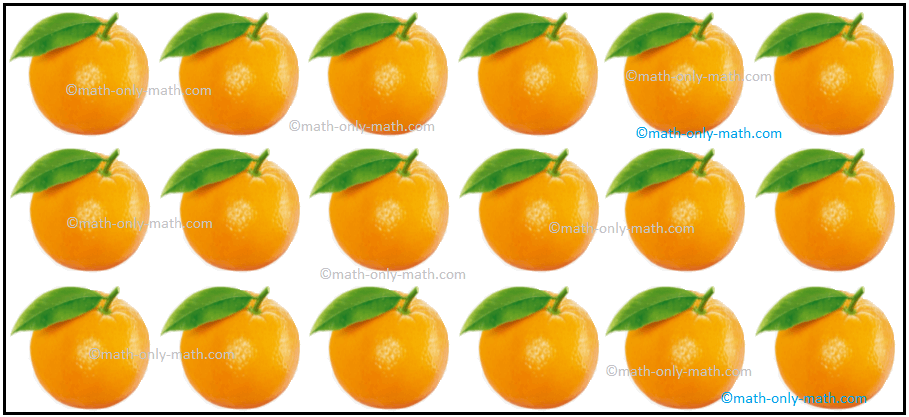
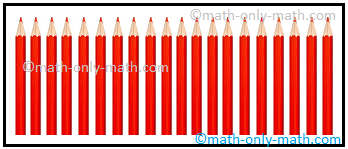
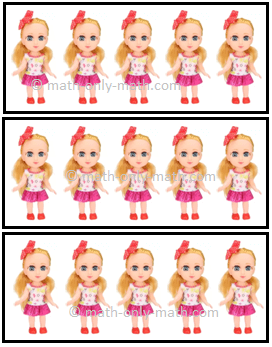
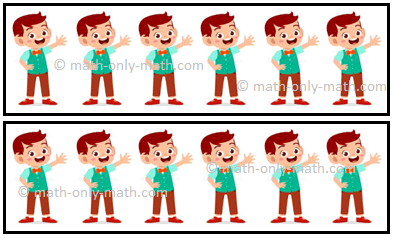
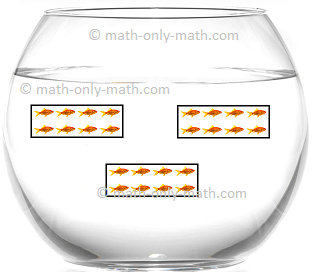

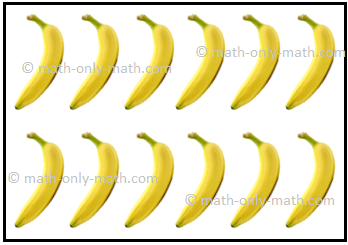
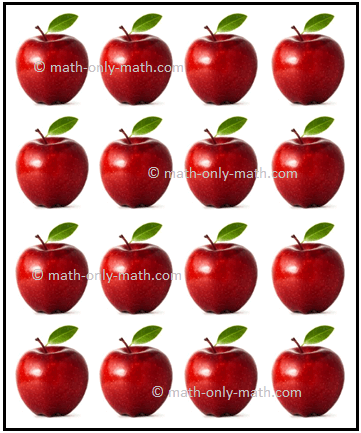

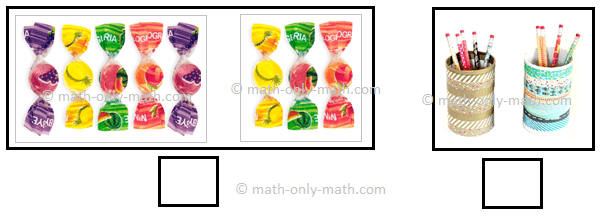
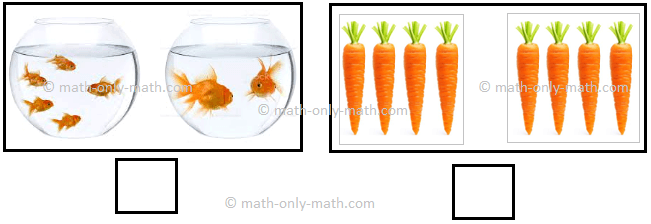
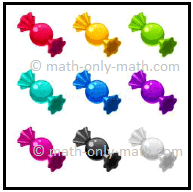
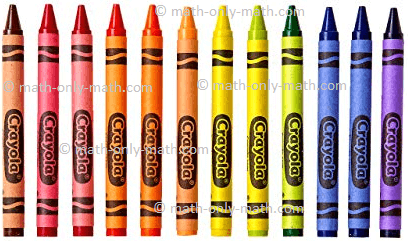
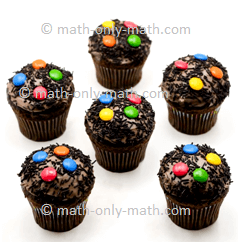

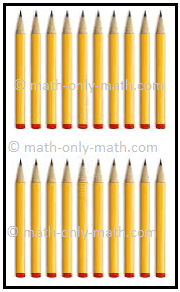


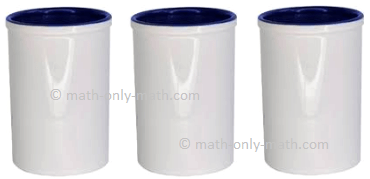




New! Comments
Have your say about what you just read! Leave me a comment in the box below. Ask a Question or Answer a Question.